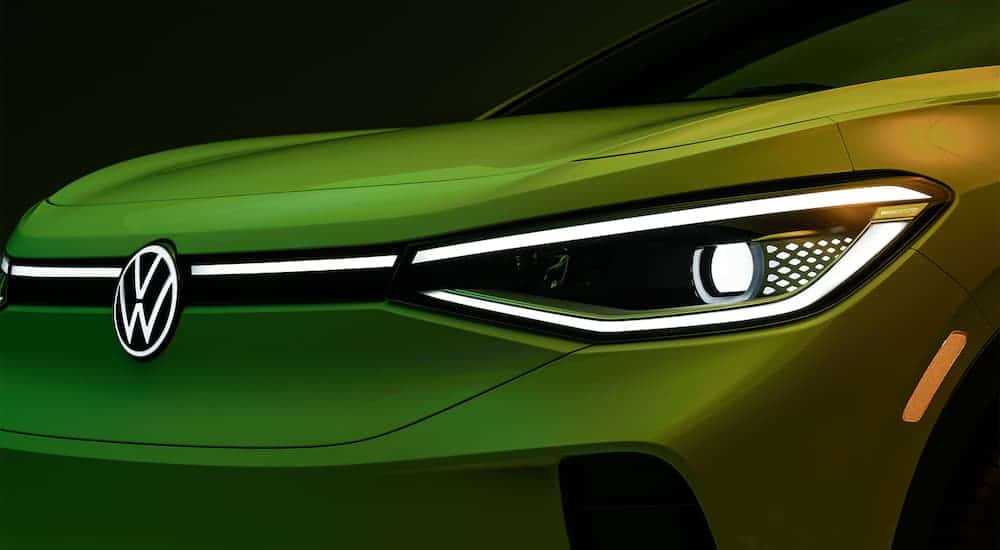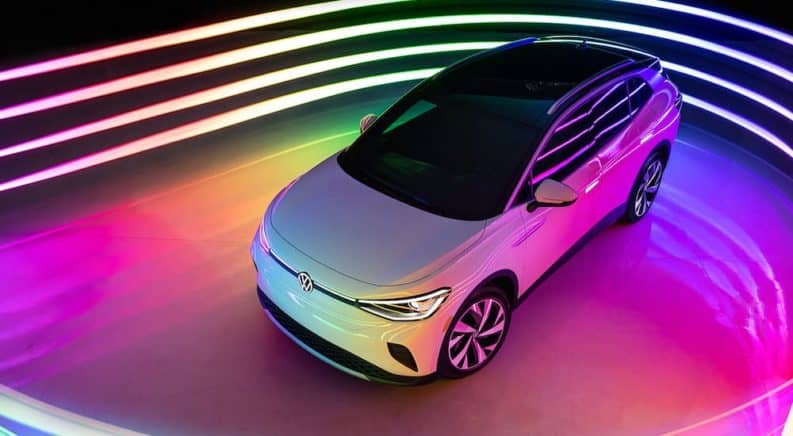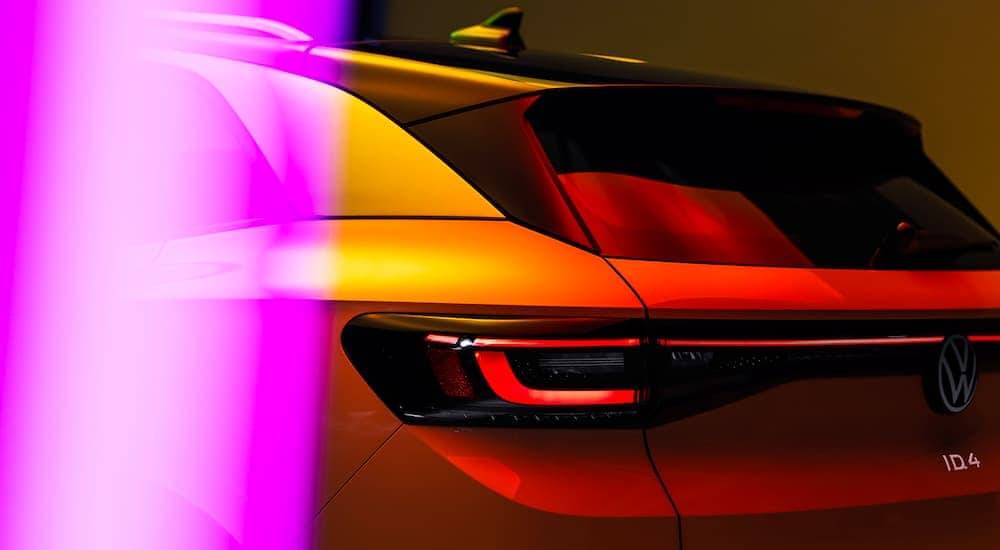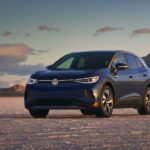The electric vehicle (EV) landscape shifted significantly on March 15, 2021, and put Tesla on notice: be afraid, be very afraid. Why? Here comes Volkswagen, hard on its heels and giving buyers a solid reason to google “VW dealer near me” to get connected to the automaker that’s coming in hot with cutting-edge EV technology.
What happened on March 15? Volkswagen held its first-ever Power Day; a media event staged to announce the company’s long-term EV strategy. That strategy centers on developing efficient battery and charging technologies and achieving manufacturing economies that result in lower consumer pricing on EVs. It’s a massive pivot point for VW that will eventually mean a long-term win for EV consumers.
Volkswagen covered a range of topics but always brought the conversation back to affordability, the hurdle it believes most thwarts EV acceptance by mainstream buyers. To combat this, there’s a renewed focus not only on the battery itself but on the manufacturing processes required to produce it at mass-market levels.
What we learned at this event carries global implications for the automotive industry. It’s a peek behind the curtain of Volkswagen’s comprehensive EV adoption strategy, a detailed plan that is poised to meet aggressive legislative benchmarks for zero-emission mobility both in Europe and here in the United States. It also sets the stage for the industry’s march toward an all-electric future. Are you ready for it? Here’s an overview of what we learned and why it might be time to start thinking about putting an EV in your driveway.
Battery Technology
Any effective battery technology succeeds when it delivers an inverse relationship of cost and range. That is a low-cost battery with a long driving range. Just five years ago, the potential for such a battery to exist even in prototype form was slim. Today, thanks to quantum leaps in battery design, companies like Volkswagen are finding ways to make the impossible possible.
To give you a real-world comparison, consider cell phones. Adjusted for inflation, the first installed car phones cost a whopping $9,000, which meant you’d only find them in the vehicles of one-percenters and technophiles. But today, not only does everyone have a cellphone in their pocket at a fraction of the price, but modern phones are also far more capable. It’s a perfect metaphor for EV battery technology. Early EVs – think Tesla – came with exorbitant price tags and questionable range and technology features. They appealed to early adopters with deep pockets and a tolerance for the quirks and bugs that go along with new technology.
Moving new technology from the early enthusiast phase to mainstream adoption requires two important milestones: affordable pricing and user-friendly characteristics. In the EV world, that means low price and high driving range, with no reduction in performance. Volkswagen knows this and has committed to driving down battery manufacturing costs to put EVs within reach of budget-minded buyers.

Manufacturing Advancements
One of the key takeaways from Volkswagen’s Power Day was the company’s plan to move forward with building a Unified Battery Cell. In simple terms, the unified cell is a scalable design that can be shared by roughly 80 percent of the vehicles Volkswagen intends to build. The shared cell means a projected decrease in manufacturing costs of up to 50 percent over having to build specialized batteries for each vehicle.
Volkswagen will pass those savings on to buyers over the next several model years, with battery manufacturing eventually becoming its primary business. Their plan to build six major manufacturing plants in Europe means the company will be capable of making 240 GWh of batteries every year, enough to power over four million EVs.
The unified cell strategy is set to hit its stride by 2023, meaning Volkswagen will be actively producing this version of its battery cell in factories. However, the ultimate goal is moving from current lithium-ion batteries to future solid-state batteries. The technology is somewhat complex, but the big takeaways are that solid-state batteries can charge faster, last longer, and they’re far less expensive to produce.
Overall, the media event allowed us to see the depth and focus of Volkswagen’s commitment to what it calls “e-mobility,” a complete departure from gas and diesel-powered vehicles. Infrastructure is a huge part of that goal, which is why Volkswagen has entered into key strategic partnerships and committed billions of dollars to develop the factories necessary to get them there.
The 2021 Volkswagen ID.4
Step one in Volkswagen’s EV world domination plan is the 2021 ID.4 crossover SUV. The ID.4 starts at a modest $39,995, right in line with strategy number one, affordable pricing. Volkswagen estimates the price to dip even more – closer to the low-$30,000 range – after federal tax credits are taken into account.
The ID.4 also ticks another important box: convenience. VW estimates that it will take about 10 minutes attached to a DC fast charger to gain 60 miles of driving range. That’s lightning-fast and way ahead of many other competitors’ claims. With an estimated driving range of 250 miles (for the planned ID.4 Pro S and 1st Edition trims), you’ll likely pass by most of the 17,000 available charging stations scattered around the country without stopping, but it’s nice to know the network continues to grow.
The ID.4 is also going to be available in all-wheel-drive, and in that configuration, Volkswagen adds a second electric motor, improving acceleration and distributing power to individual tires as needed. Because of its all-electric technology, the ID.4 makes torque instantly. When you hit the accelerator, it’s like flipping a light switch: your ID.4 turns on and immediately responds.
The 2021 ID.4 sits on Volkswagen’s MEB platform, and because it doesn’t have a traditional combustion engine, there’s tons of passenger and cargo space. Essentially the entire wheelbase (the area from the midpoint of the front tires to the midpoint of the rear tires) is devoted to the cabin, with a generous 37.6 inches of legroom for rear-seat passengers and a max cargo capacity of 64.2 cubic feet.
The single-engine rear-wheel drive ID.4 produces 201 horsepower, and the upcoming dual-motor all-wheel drive is expected to come in at a hefty 302 horsepower. The early reviewers at Car and Driver report that the ID.4 delivers a “refined ride quality and quiet cabin.” Thanks to an expanded 4-year/50,000-mile limited warranty and an 8-year/100,000-mile battery component warranty, owning an ID.4 is stress-free, too.
VW Is Ready for the Future
These are exceedingly exciting times in the automotive industry, especially after big announcements like the ones made by Volkswagen that help us visualize what an all-electric future could look like. The general public is coming along more slowly than automakers would like, but as they bridge the gap between cost and practicality, the future seems clearer.
One less publicized goal touted by Volkswagen leadership may prove to be the most defining one: a push to create chargers capable of storing excess energy – called bi-directional chargers – to bypass peak usage periods and absorb renewable energy instead. Why is this big news? Successfully achieved, a bi-directional charger platform means eventually EV charging could be completely free.
There are so many benefits to EVs, beginning with emissions reduction. Virtually eliminating such a pervasive environmental offender will pay dividends for generations to come, and it can happen without any sacrifice to all the best characteristics of the driving experience: exhilaration, performance, and road trip-ready driving range.





